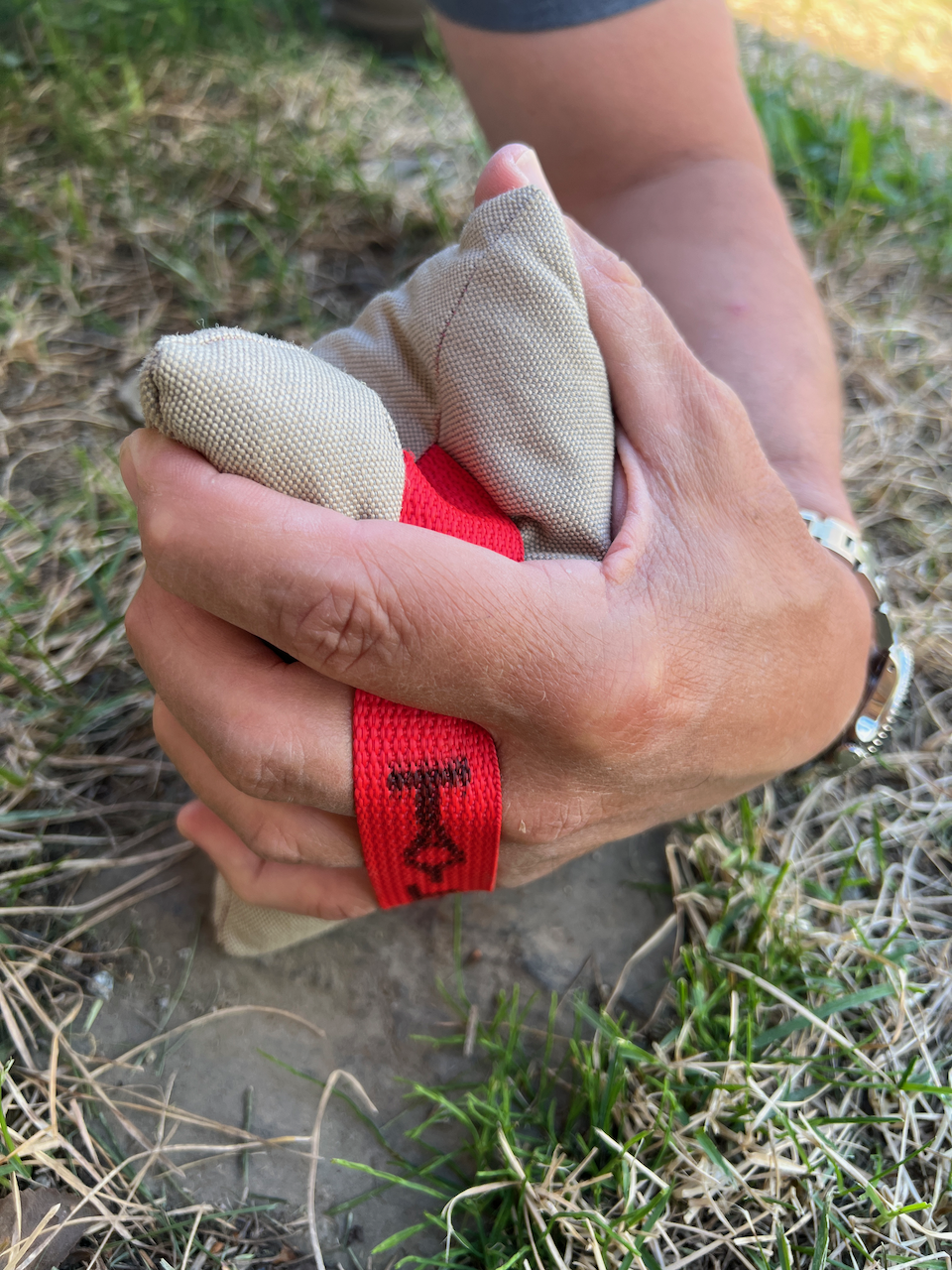
I have a very unique take on your relationship with your rear bag and its relationship to your shooting. What for some is a total afterthought, given very little consideration beyond what is trending in the marketplace or is being promoted heavily by this shooter or that. My take comes from being in your space. You see, I spend a ton of time down on a knee watching the relationship between shooter and equipment. This time provides me, and ultimately you, a diagnosis of what is going wrong, or should we say “differently” from shot to shot.
Be sure to review this article, Mechanics of the Support Hand
If you have been following along through my articles and time spent with students, I like to break down the small details of what takes place in the tenth of a moment of the shot. Through physiology, physics, and math we find solutions to problems. Many times it’s a problem you never even knew you had.
Rear Bags Matter

In this instance, it’s the extremely important rear support of your rifle. You have a firm grip, pulling straight to the rear with the graspers of the firing hand. Check. The cheek weld is solid and the rifle sits firmly in the pocket of the shoulder. Check. The rear of the rifle is being supported. Check. It is being supported by a very crucial piece of gear that we call the rear bag.
We get it. You want a one-bag solution to all of your shooting problems, but what is good for the barrier or tank trap is not necessarily good for the ground and the reason is control. On the ground, we have more control because we have front support in the form of a bipod and rear support in the form of a firm rear bag. In alternate positions, we have less control because we surrender it to fit the prop or firing position. This is not by choice, it is because we are attempting to become better at what we have less control over… time, and available support.
The issue with using a front rest as a rear bear is one of control because of the size of the front rest. The bigger the front rest the harder it is to support the rear of the rifle correctly.
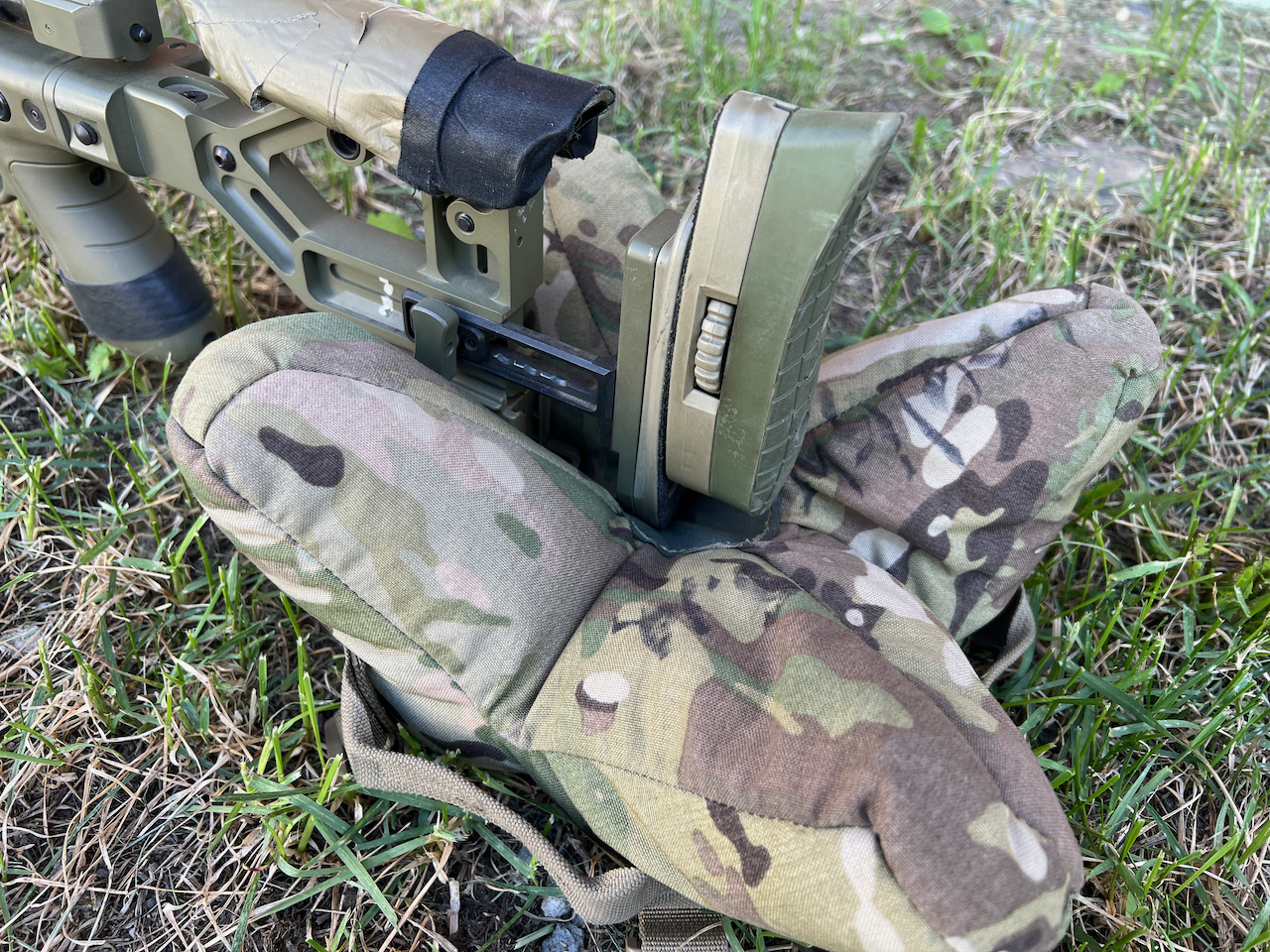


This compromise can cause the rear of the rifle to move during recoil thus affecting the shot. If you ever shot over the target, the number one cause we see is dipping in the rear bag.
However, before we master alternative positions, we must first master the fundamentals of a solid firing position. The most stable firing position is the prone position because of its seven points of contact. Nowhere in the shooting sports do we have seven points of contact except prone. Those seven points are for another day. Let’s stay focused on the problems we face today.
The Problem –

You do not have true solid support in the rear bag.
The problem is two-fold. The first that presents itself is the composition, size, and structure of the rear bag. Another problem is how we manage that structure. We’ve established that recoil will exploit angles. As seen from above, the angles are exploited to point to a lateral (horizontal) weakness that pushes or pulls a shot to the left or right. At the rear bag, the problem created is not providing enough consistent support to achieve the outcome of predictable, repeatable precision and accuracy in the vertical plane as well as the horizontal.

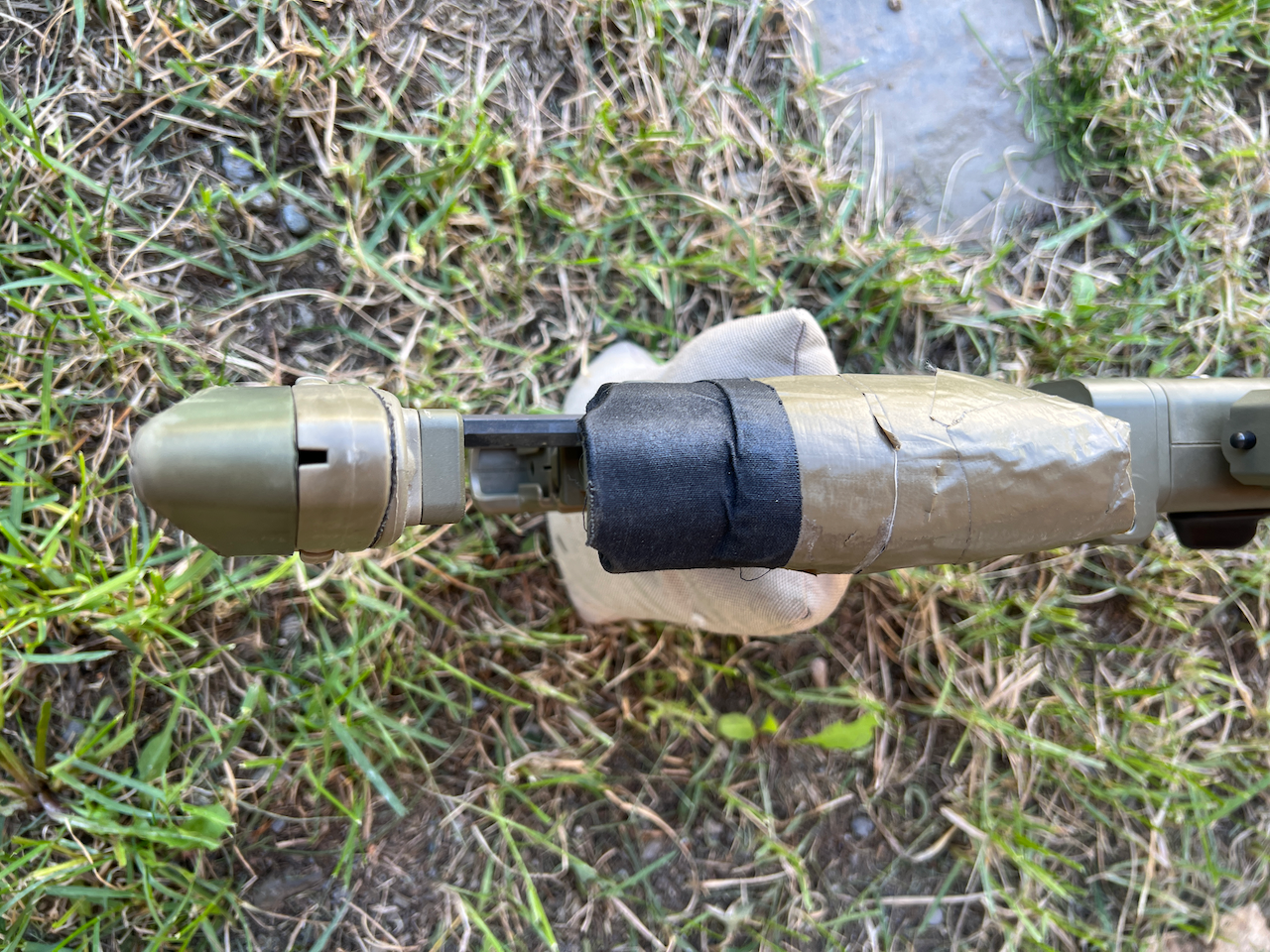
You see, a weak support hand, with an improper grasp of the rear bag, will allow the rifle’s bag rider or stock to sink in the rear bag when the grip is not firm. Failure to control the ears of a rear bag with the pincers of the support hand creates lateral instability also. And that will allow fishtailing of the butt stock through the recoil pulse.
You have become accustomed to compromising the rear bag in search of an outcome. The buttstock often sinks in the rear bag when you should be adjusting your bipod legs higher as we move down range. You create an angle with the bag in the form of a “hinge” created by leaning the rear bag fore or aft. That hinge gets exploited by recoil and the butt stock sinks at the shot. You have not achieved a proper relationship between the buttstock and your shoulder because you have been compromising. that vertical stringing you sometimes have? Well, there you go. That vertical stringing you sometimes have… well there you go.
The Solution –
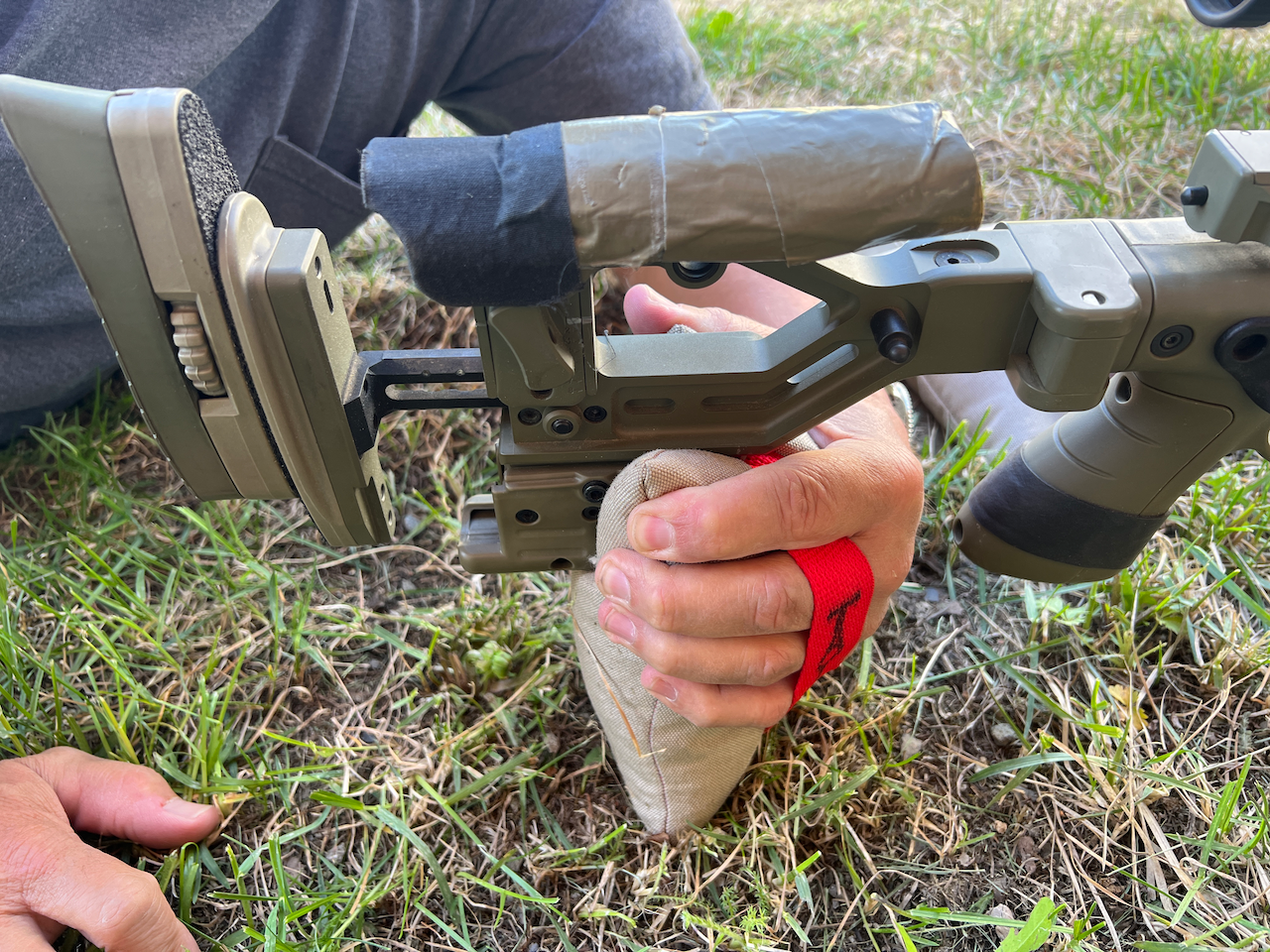
Control is what we seek. Consistent control. Never compromise the rear bag.
The rear bag needs to be of a manageable size that allows the support hand to wrap firmly around it. It needs to be rectangular in shape so that the upper and lower surface can remain perpendicular to the line of departure and not surrender control of either the vertical or horizontal planes. It must be tall enough to allow the shooter a workspace under the rifle’s action, and tall enough to promote the firm bite that the rifle’s butt needs in the shoulder.
First, we must separate the functions of the support hand into pincers and graspers and allow them to operate independently just as we do with the firing hand. See “Mechanics of the Firing Hand”, an article I wrote for SnipersHide.com . It lays out the anatomy and function of the firing hand.
The Process –
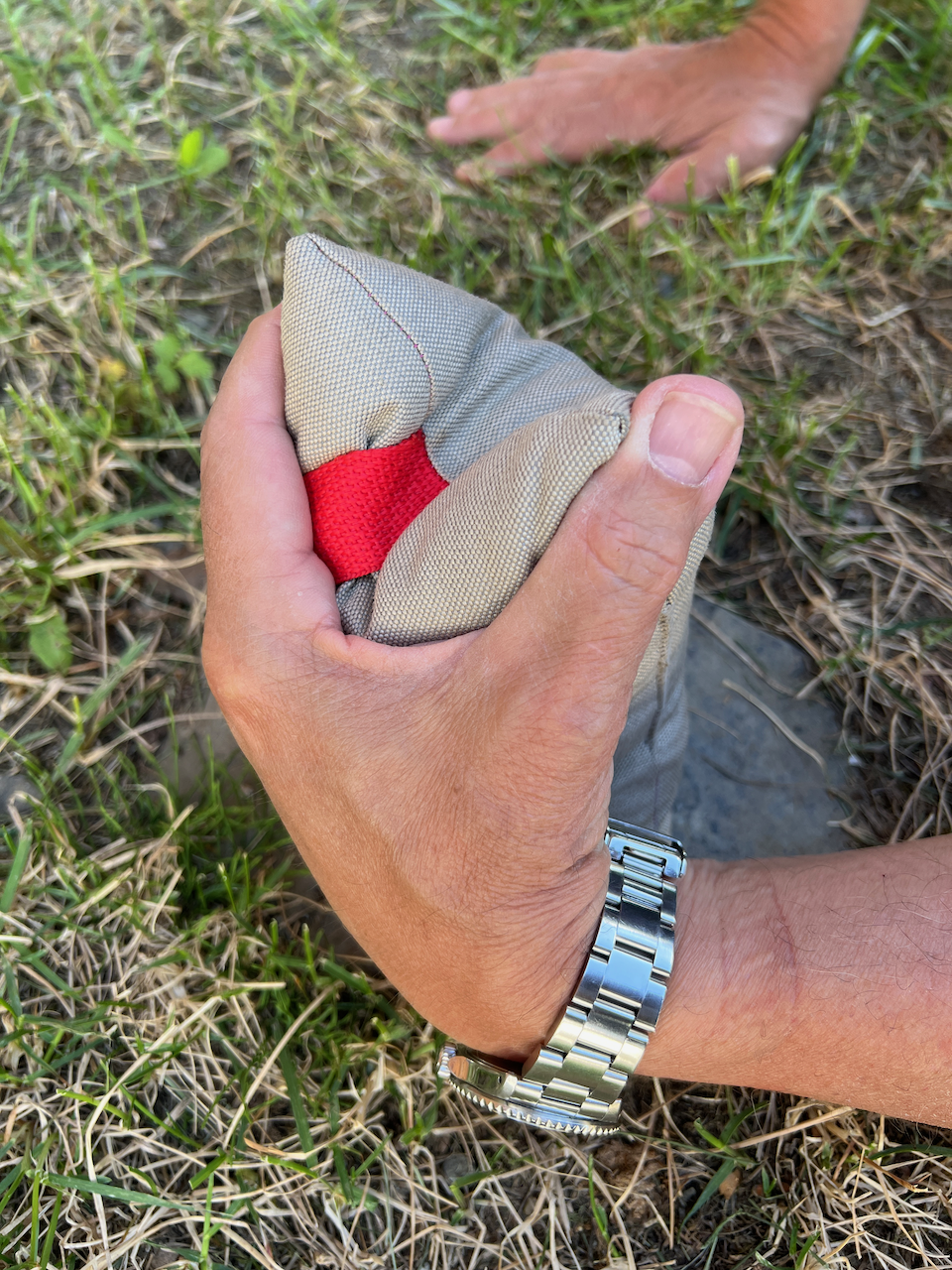
Grip the body of the bag with the graspers. Firmly.
Grip the ears of the bag with the pincers. Firmly.
Together they will provide support for the rifle to rest and recoil. Maintain vertical and lateral support, through the follow-through phase, so that the crosshairs remain on or very near the target. Even while running the bolt for the next shot.
There is only one height for the rear bag and that is the height that is provided by a firm grip. The front of the rifle is then adjusted with the notches on the bipod to achieve a sight picture vertically without ever surrendering the grip on the rear bag. Learn to adjust the bipod and not surrender support in the rear bag.
It’s that simple.
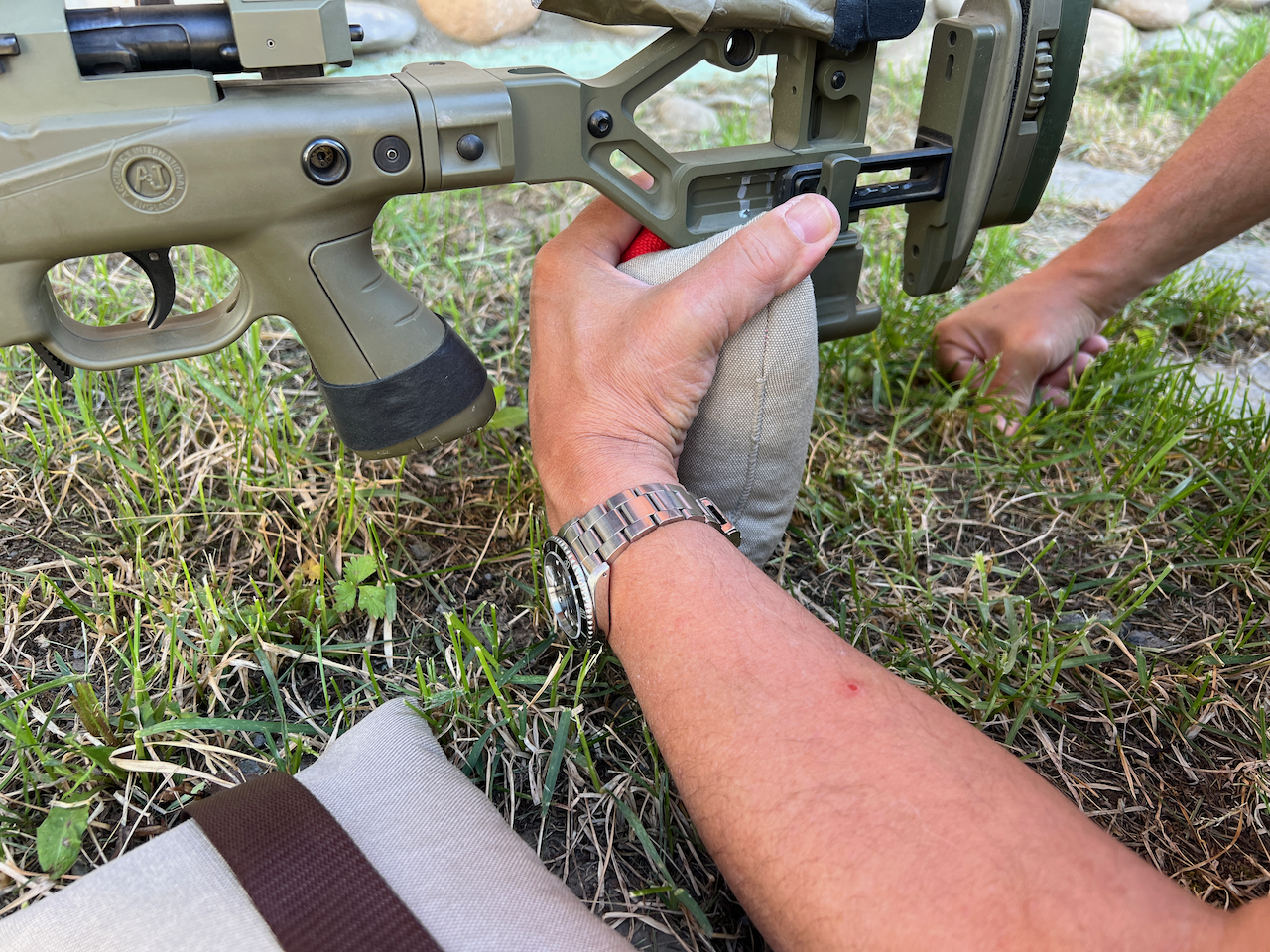
But, it’s that hard. Consistency and control are what we are seeking. Putting yourself under the scrutiny of instructors like Frank Galli or myself will provide you with the feedback necessary to acquire that goal of a consistent outcome. Come see us and we will fix you because we fix problems. And yes, problems you never knew you had.
I got tired of looking for the perfect rear bag. Too light. Too little. Too big. Too little fill. Too much fill. Too damned expensive. I wanted a rear bag I could offer a student on the course firing line and he/she would be thrilled because it fixed that problem. So I created that bag. Want one? Come see Frank and me at a precision rifle course or PM me.
Marc Taylor is the Co-Instructor of Sniper’s Hide Precision Rifle Course and Alaska Precision Rifle Course. Reach Marc at [email protected].
Other articles by Marc Taylor:
“Mechanics of the Firing Hand”


